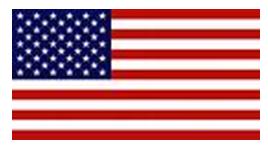Can The C-17 Get A Boost From The Goose? (Boeing SAVE Video)
 Friday, June 13, 2014 at 07:37AM
Friday, June 13, 2014 at 07:37AM
Ok, trying to tap into the energy from the wake created by a lead airplane to reduce overall fuel burn (like geese do in the 'V' formation) isn't just for the C-17... but apparently Boeing has been doing some research and software development using the C-17 as a testbed for the idea of reducing fuel burn when you have multiple aircraft headed the same direction. Boeing calls the program SAVE: Surfing Aircraft Vortices for Energy.
 Video screenshot: Boeing C-17's are a perfect fit for the SAVE test program
Video screenshot: Boeing C-17's are a perfect fit for the SAVE test program
Let's stop for a moment: I like talking about the C-17 here because if all goes well I'll be inside one next week as it drinks some kerosene from a KC-135! I've got another fabulous opportunity to ride along on with the 434th Air Refueling Wing. If you haven't seen the 56 pix and story from my KC-135 ride in 2010 then you should go check it out now, it was an awesome experience and I got some great pix of a B-52 from down in the boom pod. And then there's this amazing B-52 CoolPix that I captured.
My opportunity this time will be in the receiving aircraft, a C-17, and I must say that I am really looking forward to it. A big thank you in advance goes out to the 434th ARW for the opportunity. (check out the 434th ARW facebook page)
So, as the video above says, there are some potentially rather large reductions in fuel burn available if we can position a following aircraft in the right spot to take advantage of the lead aircraft wake. And while it's easy to imagine the military taking advantage of this when more than one aircraft is headed the same direction, I don't see why we couldn't make this work with commercial airliners too.
I guess we'll know about those possibilities when we see additional details about how far away the aircraft can be and what the realistic reduction in fuel burn is. In the end it might simply be an Air Traffic Control and autopilot software project that could lead to reduced fuel burn for the airlines, which of course would lead the airlines to immediately convert that windfall into extra legroom for coach passengers, right?
 Video screenshot: saving fuel by Surfing Aircraft Vortices for Energy
Video screenshot: saving fuel by Surfing Aircraft Vortices for Energy
Regardless of what the airlines might do with increased profit from saving some fuel, it's cool to see that as technology advances, we continue to figure ways to do what the Creator has been doing all along!
Like this post? Tell your friends... use the 'share' or 'email' article links below - thanx : )
 Martt |
Martt |  2 Comments |
2 Comments | 













































































Reader Comments (2)
When I was learning to fly we were always told to be careful of and avoid wake turbulence. This is an interesting take on using wake turbulence, but does it cause any stability problems for the following aircraft?
JetAviator7 - the video doesn't really elaborate and I admit that I didn't look any where else for more program details... it'll be interesting to see what the specifics are for sure. My guess is that with being on the outside of the wake and back far enough where it had lost its wild intensity, there's probably not much of an issue for the following aircraft. As with boating, the wave is likely pretty specifically defined and it's the ability to know exactly where that invisible wave is and modern computer-controlled autopilots that would make all this possible today.